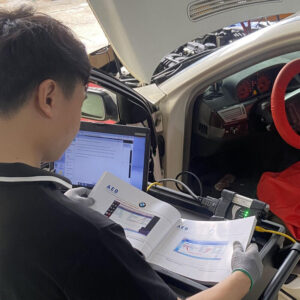

How to Fix P0074 Fault Code on Audi
Contents
- 1. What Does Audi P0074 Fault Code Mean?
- 2. What Causes Audi P0074 DTC?
- 2.1 Faulty Intake Air Temperature (IAT) Sensor
- 2.2 Damaged Wiring or Connectors
- 2.3 Contaminated Intake System
- 2.4 Engine Control Unit (ECU) Issues
- 3. What are The Common Symptoms of P0074 Audi Fault Code?
- 4. Tools and Software Required
- Tools
- Software Support
- 5. Step-by-Step Guide to Fix P0074 Fault Code on Audi
- Conclusion
- Need Expert Help? Contact AutoExplain!
The P0074 fault code on Audi vehicles is related to the Outside Temperature Sensor-G17 open circuit. This issue typically occurs when the signal from the Intake Air Temperature (IAT) Sensor is unstable or beyond the allowable limits. Since the IAT sensor plays a crucial role in optimizing engine performance, fuel consumption, and ignition timing, addressing this fault promptly is essential.
1. What Does Audi P0074 Fault Code Mean?
The P0074 fault code in Audi vehicles specifically points to an issue with the Outside Temperature Sensor-G17 circuit, indicating an open circuit. While the code directly mentions this sensor, it’s frequently triggered when the signal from the Intake Air Temperature (IAT) Sensor becomes unstable or falls outside the acceptable parameters. This is because the engine control unit (ECU) relies on accurate temperature readings from various sensors to optimize critical functions.
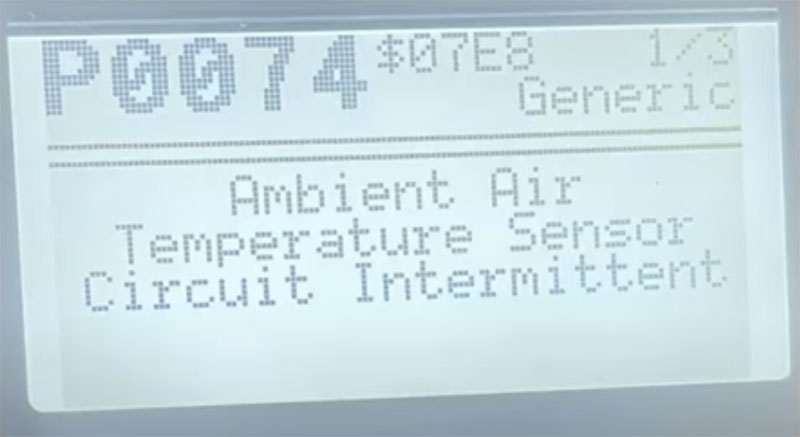
The IAT sensor plays a vital role in informing the ECU about the temperature of the air entering the engine. This information is crucial for:
-
Optimizing Engine Performance: The ECU uses IAT data to adjust the air-fuel mixture, ensuring efficient combustion and power delivery. Incorrect readings can lead to suboptimal performance, such as sluggish acceleration or reduced power.
-
Managing Fuel Consumption: Accurate air temperature readings help the ECU calculate the precise amount of fuel needed for efficient combustion. A faulty IAT sensor can cause the ECU to inject too much or too little fuel, leading to increased fuel consumption.
-
Controlling Ignition Timing: The temperature of the intake air also affects the combustion process. The ECU uses IAT data to adjust the ignition timing for optimal power and efficiency. Incorrect timing due to a faulty sensor can result in poor engine performance or even damage.
Given the significant impact of the IAT sensor on your Audi’s engine management system, addressing the P0074 fault promptly is highly recommended. Ignoring this issue can lead to further complications and increased repair costs down the line. Understanding the nuances of this diagnostic trouble code is the first step toward effective resolution. Let’s delve deeper into the potential causes behind this fault.
2. What Causes Audi P0074 DTC?
Several factors can contribute to the triggering of the P0074 fault code in your Audi. Identifying the root cause is essential for a successful and lasting repair. Here are the common culprits:
2.1 Faulty Intake Air Temperature (IAT) Sensor
The IAT sensor, like any other mechanical or electrical component, is subject to wear and tear over time. Prolonged exposure to heat, vibrations, and contaminants within the intake system can lead to its eventual failure. Internal components may degrade, resulting in inaccurate readings or a complete lack of signal. If the sensor is sending erratic or out-of-range signals, the ECU may interpret this as an issue with the outside temperature sensor circuit, thus setting the P0074 code. Replacing a worn-out or failed IAT sensor is often necessary to rectify this situation.
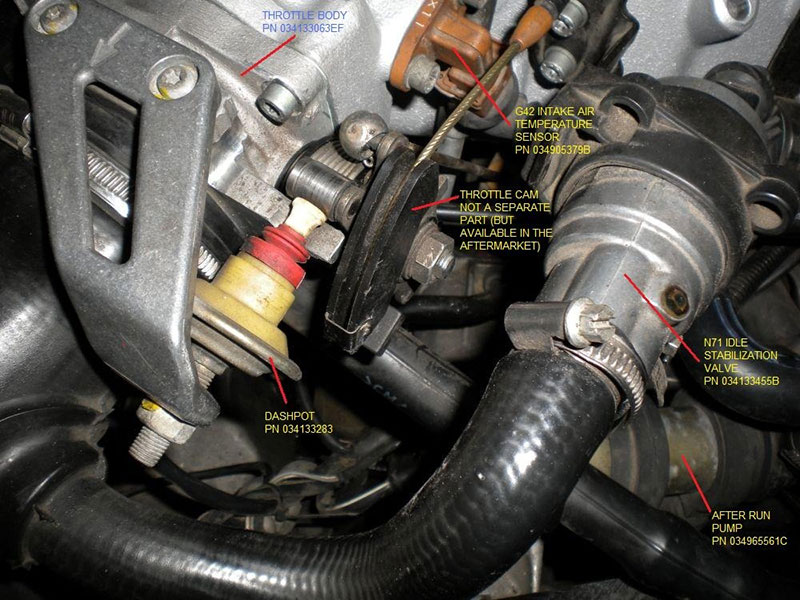
2.2 Damaged Wiring or Connectors
The electrical circuit connecting the IAT sensor to the ECU is crucial for transmitting accurate temperature data. Any damage to this wiring or the associated connectors can disrupt the flow of information and trigger the P0074 fault. Common issues include:
-
Loose Connections: Vibrations and general wear can cause connectors to loosen, leading to intermittent or complete signal loss.
-
Oxidation or Corrosion: Exposure to moisture and environmental elements can cause oxidation or corrosion on the connector terminals, increasing resistance and hindering signal transmission.
-
Broken or Short-Circuited Wiring: Physical damage to the wiring, such as cuts, abrasions, or rodent activity, can result in open circuits or short circuits, directly affecting the sensor’s operation.
A thorough inspection of the wiring harness and connectors associated with the IAT sensor is crucial to identify and address any such issues. Repairing or replacing damaged wiring and ensuring secure and clean connections can often resolve the P0074 fault.
2.3 Contaminated Intake System
The intake system of your Audi is designed to deliver clean air to the engine. However, over time, dust, debris, and oil residue can accumulate within the air filter housing, intake ducts, and even on the IAT sensor itself. This contamination can interfere with the sensor’s ability to accurately measure the intake air temperature. A layer of dirt or oil on the sensor element can insulate it from the actual air temperature, leading to incorrect readings and potentially triggering the P0074 code. Regularly inspecting and cleaning the air intake system, including the IAT sensor, can help prevent this issue.
2.4 Engine Control Unit (ECU) Issues
While less common than sensor or wiring problems, issues within the ECU can also contribute to the P0074 fault code. Software glitches, internal electronic failures, or incorrect signal processing within the ECU can lead to misinterpretation of the IAT sensor data or the setting of erroneous fault codes. Diagnosing ECU-related problems often requires specialized tools and expertise. If other potential causes have been ruled out, an ECU diagnostic or reprogramming may be necessary.
Understanding these potential causes empowers you or your mechanic to approach the diagnostic process systematically and efficiently. Now, let’s explore the telltale signs that indicate the presence of the P0074 fault code in your Audi.
3. What are The Common Symptoms of P0074 Audi Fault Code?
When the P0074 fault code is active in your Audi, you may observe several symptoms that can provide valuable clues about the underlying issue. Being aware of these signs can help you recognize the problem early and seek timely resolution.
3.1 Check Engine Light (CEL) Illumination
The most immediate and common symptom of the P0074 fault code is the illumination of the Check Engine Light (CEL) on your Audi’s dashboard. This warning light is designed to alert you to potential problems within the engine management system, and a P0074 code will invariably trigger it. While the CEL can indicate various issues, its appearance should prompt you to perform a diagnostic scan to identify the specific fault code.
3.2 Difficulty Starting the Engine or Rough Idling
An inaccurate reading from the IAT sensor can disrupt the engine’s air-fuel mixture, making it difficult to start the engine, especially in cold weather. Similarly, once started, the engine may exhibit rough idling, characterized by uneven engine speed, vibrations, or a tendency to stall. This occurs because the ECU is not receiving accurate information to properly regulate the combustion process at idle.
3.3 Reduced Engine Efficiency and Higher Fuel Consumption
As mentioned earlier, the IAT sensor plays a crucial role in optimizing fuel delivery. If the sensor is providing incorrect temperature data, the ECU may miscalculate the required fuel amount, leading to an overly rich or lean mixture. A rich mixture (too much fuel) can result in wasted fuel and decreased fuel economy, while a lean mixture (too little fuel) can lead to reduced power and potential engine damage over time. Consequently, you might notice a significant increase in your Audi’s fuel consumption when the P0074 fault is present.
3.4 Potential Related Fault Codes
In some cases, the P0074 fault code may be accompanied by other related diagnostic trouble codes. Specifically, you might encounter:
-
P0113 (IAT Circuit High Input): This code indicates that the signal voltage from the IAT sensor is higher than expected.
-
P0112 (IAT Circuit Low Input): Conversely, this code suggests that the signal voltage from the IAT sensor is lower than expected.
The presence of these additional codes can further pinpoint the issue to the IAT sensor circuit and aid in the diagnostic process. While P0074 focuses on the outside temperature sensor circuit being open, the underlying cause often stems from the IAT sensor.
Recognizing these symptoms should encourage you to investigate the P0074 fault code promptly. Delaying diagnosis and repair can lead to further engine performance issues and potentially more costly repairs in the future. Now, let’s explore the tools and software you’ll need to tackle this issue.
4. Tools and Software Required
To diagnose and fix the P0074 fault code, you will need the following:
Tools
- OBD-II Scanner: Use diagnostic tools such as VAS 6154 or VAS 5054A to scan fault codes and monitor sensor data.
- Multimeter: To measure voltage and resistance in the IAT sensor circuit.
- Basic hand tools: Wrenches and screwdrivers for removing the sensor.
- Sensor cleaner: A specialized cleaning solution to remove dirt from the IAT sensor.
Software Support
- ODIS Service & Odis Engineering: For advanced diagnostics and ECU programming if necessary.
5. Step-by-Step Guide to Fix P0074 Fault Code on Audi
Step 1: Diagnose the Fault Using an OBD-II Scanner
-
Locate the Diagnostic Port: The OBD-II diagnostic port is typically located under the dashboard on the driver’s side of your Audi.
-
Connect the Scanner: Plug your OBD-II scanner into the diagnostic port.
-
Turn on the Ignition: Turn the ignition key to the “on” position without starting the engine. This will power up the vehicle’s electrical system and allow the scanner to communicate with the ECU.
-
Read and Record Fault Codes: Follow the scanner’s instructions to read the stored fault codes. Note down all the codes present, especially the P0074 code. Also, record any other related codes like P0112 or P0113.
-
Check Live Data: If your scanner has the capability, access the live data stream and look for the Intake Air Temperature (IAT) sensor reading. Observe if the reading is erratic, consistently out of the expected range, or completely absent. This can provide valuable insight into whether the IAT sensor is functioning correctly.
Step 2: Inspect the Intake Air Temperature (IAT) Sensor
-
Locate the IAT Sensor: The IAT sensor is typically located on the intake manifold or near the air filter housing. Consult your Audi’s repair manual for the exact location for your specific model.
-
Disconnect the Electrical Connector: Carefully disconnect the electrical connector from the IAT sensor. Inspect the connector and wiring for any signs of damage, corrosion, or loose terminals.
-
Measure Sensor Resistance: Using your multimeter, set it to measure resistance (Ohms). Connect the multimeter probes to the terminals of the IAT sensor. Consult your Audi’s repair manual for the expected resistance range for your specific IAT sensor at a given ambient temperature. If the measured resistance is significantly outside the specified range or shows an open circuit (infinite resistance), the sensor is likely faulty and needs replacement.
Step 3: Examine Wiring and Connectors
-
Visually Inspect Wiring: Trace the wires leading to the IAT sensor connector. Look for any signs of damage, such as cuts, abrasions, or melted insulation. Pay close attention to areas where the wiring might be exposed to friction or heat.
-
Check Connector Terminals: Inspect the terminals within the sensor connector and the corresponding terminals on the wiring harness connector. Look for signs of corrosion, oxidation, or bending. Clean any corroded terminals with a specialized electrical contact cleaner. Ensure that the terminals are making good contact.
-
Test for Continuity: Using your multimeter set to the continuity testing mode (often indicated by a beep symbol), check the continuity of each wire in the IAT sensor circuit between the sensor connector and the ECU connector (you’ll need your Audi’s wiring diagram for this step). If there is no continuity, there is a break in the wire that needs to be repaired or replaced.
-
Check for Shorts to Ground or Voltage: With the sensor disconnected, use your multimeter to check for shorts between each of the sensor circuit wires and ground (a known good ground point on the vehicle chassis). Also, check for any unintended voltage on the sensor signal wire with the ignition on (again, refer to the wiring diagram for expected voltage levels). Shorts or unexpected voltage can indicate a wiring fault.
Step 4: Clean the Sensor and Air Intake System
-
Remove the IAT Sensor: If you haven’t already, carefully remove the IAT sensor from its mounting location.
-
Clean the Sensor Element: Spray a small amount of specialized sensor cleaner onto the sensing element of the IAT sensor. Avoid touching the element directly. Allow the cleaner to evaporate completely before reinstalling the sensor.
-
Inspect and Clean the Air Intake: Examine the air filter housing and intake ducts for any significant accumulation of dust, debris, or oil. Clean these components as necessary using a clean cloth or a vacuum cleaner. Ensure that the airflow to the sensor is not obstructed.

Step 5: Check and Update ECU Software (If Necessary)
-
Perform ECU Scan with Advanced Software: If you have access to VCDS or ODIS, perform a comprehensive scan of the ECU to check for any software-related issues or inconsistencies.
-
Check for Available Updates: Using ODIS (or sometimes through VCDS with specific procedures), check if there are any software updates available for your Audi’s ECU that might address known issues related to sensor readings or fault code triggering.
-
Perform ECU Update/Reprogramming (with Caution): ECU updating or reprogramming should only be performed if you are confident in the process and have the correct software and equipment. Incorrect programming can lead to serious vehicle malfunctions. If you are unsure, it’s best to consult a qualified Audi technician.
Step 6: Clear Fault Codes and Test Drive
-
Reconnect All Components: Ensure that the IAT sensor is securely reinstalled and the electrical connector is firmly attached.
-
Clear Fault Codes: Use your OBD-II scanner to clear the P0074 fault code and any other related codes from the ECU’s memory.
-
Start the Engine: Start your Audi’s engine and observe if the Check Engine Light remains off.
-
Monitor Live Data (Optional): If possible, use your scanner to monitor the live data from the IAT sensor again to ensure that it is now providing reasonable and stable readings.
-
Take the Vehicle for a Test Drive: Drive your Audi under various conditions to see if the symptoms have been resolved and the Check Engine Light remains off.
Conclusion
The P0074 fault code on Audi vehicles is linked to issues with the Intake Air Temperature (IAT) Sensor and can impact engine performance and fuel efficiency. By diagnosing the problem using an OBD-II scanner, checking the sensor, wiring, and ECU software, and taking corrective action, you can effectively resolve this issue and restore optimal engine function.
Need Expert Help? Contact AutoExplain!
If you’re unsure how to diagnose or fix the P0074 fault code, AutoExplain is here to help! We specialize in car diagnostics, coding, and programming support. Contact us today via WhatsApp at +1(936)2896695 or visit our website for expert assistance. 🚗🔧

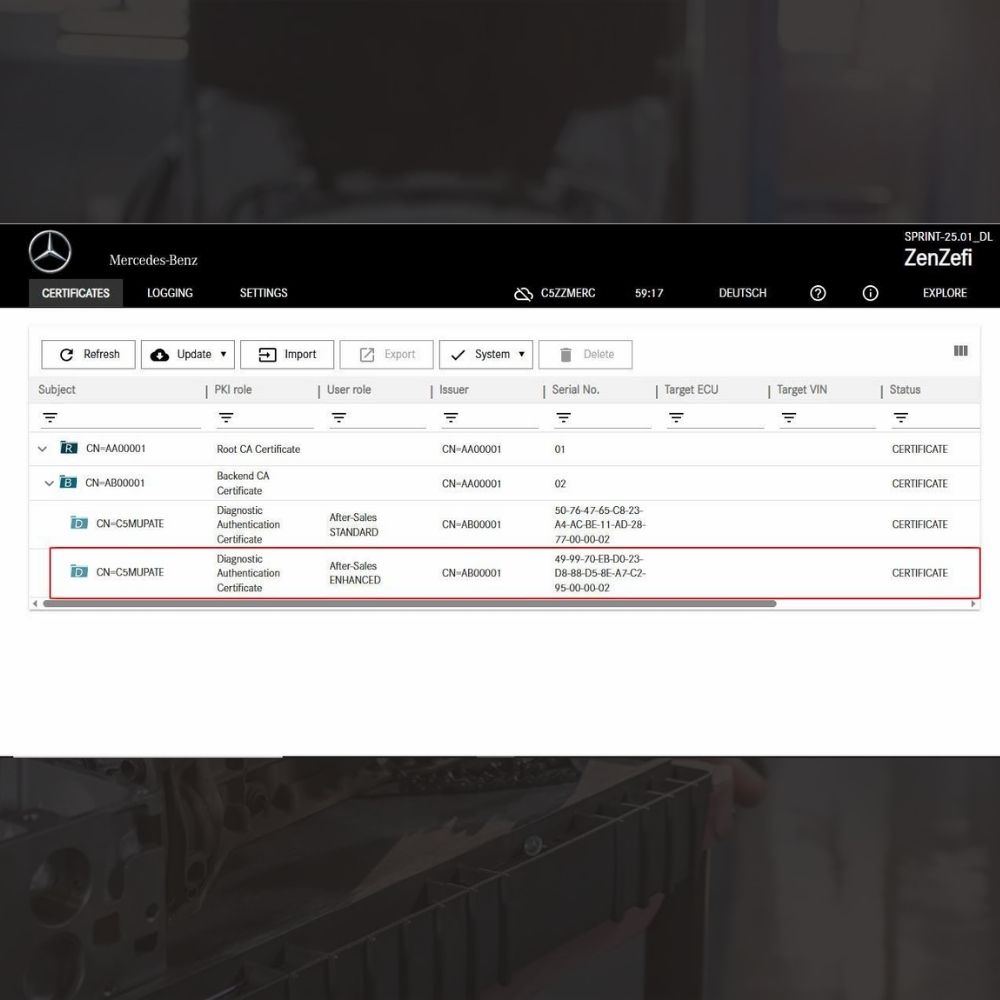
New Mercedes Car Coding Solution with ZenZefi certificate for DTS Monaco 9.02

What is DTS Monaco? Key Functions of DTS Monaco Software
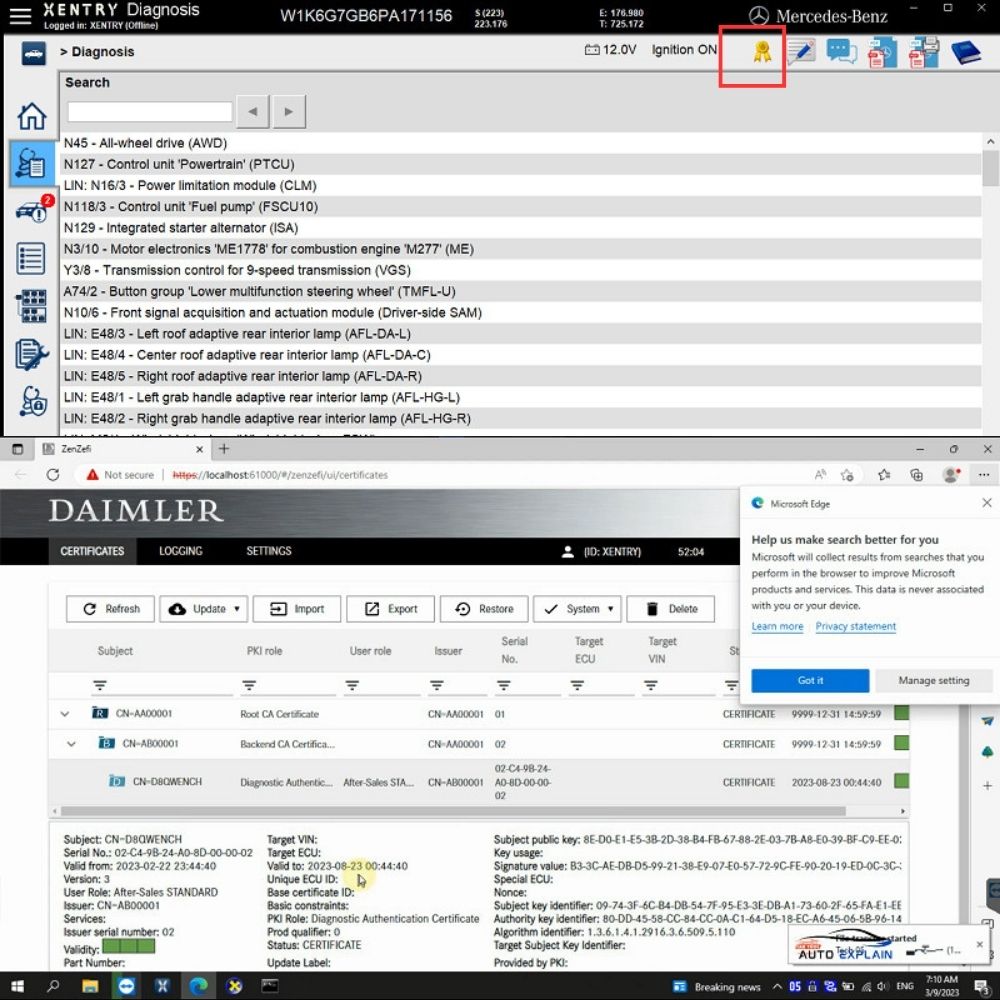
What is the Xentry Certificate Zenzefi? Why You Need It, and When It Is Required?



New Mercedes Car Coding Solution with ZenZefi certificate for DTS Monaco 9.02



